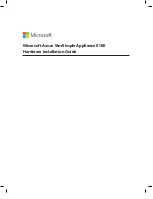
C H A P T E R
3-1
Cisco 7204 Installation and Configuration Guide
OL-5101-02
3
Installing the Cisco 7204
This chapter explains the procedures for installing and starting the Cisco 7204. The chapter contains the
following sections:
•
Rack-Mounting the Cisco 7204, page 3-1
•
General Installation, page 3-9
•
Providing a Chassis Ground Connection for the Router Chassis, page 3-11
•
Connecting Port Adapter Cables, page 3-13
•
Connecting I/O Controller Cables, page 3-13
•
Connecting Power, page 3-20
•
Starting the Cisco 7204, page 3-23
A rack-mount and cable-management kit is included in the shipping container. The rack-mount brackets
in the kit are for mounting the Cisco 7204 in standard, 19-inch-wide, 4-post equipment racks or
telco-type equipment racks. The rack-mount brackets are not suitable for use with other racks, such as
23-inch 2-post racks. The cable-management brackets are designed to relieve the strain on port adapter
interface cables that are installed on port adapters in a Cisco 7204. If you are installing an equipment
shelf or using mounting hardware other than that supplied with the chassis, review the guidelines in the
“Equipment Racks” section on page 2-6
in the chapter
“Preparing for Installation”
, then proceed to the
“General Installation” section on page 3-9
.
If you do not plan to install your Cisco 7204 in an equipment rack, proceed to the section
“General
Installation” section on page 3-9
.
Rack-Mounting the Cisco 7204
The chassis mounts to two rack posts with brackets that attach to either the front or the rear sides of the
chassis. The inside width between the two posts or mounting strips (left and right) must be at least
17 inches (43.18 cm).
Some equipment racks provide a power strip along the length of one of the mounting strips.
Figure 3-2
shows a typical 4-post equipment rack with a power strip along one of the back posts. If your rack has
this feature, consider the position of the strip when planning fastener points and ensure that you will be
able to pull port adapters and other FRUs straight out of their respective slots.
The inlet and exhaust ports for cooling air are located on the right and left of the chassis, respectively,
so multiple routers can be stacked in a rack with little or no vertical clearance.
















































